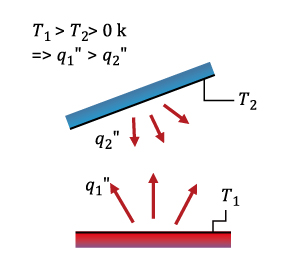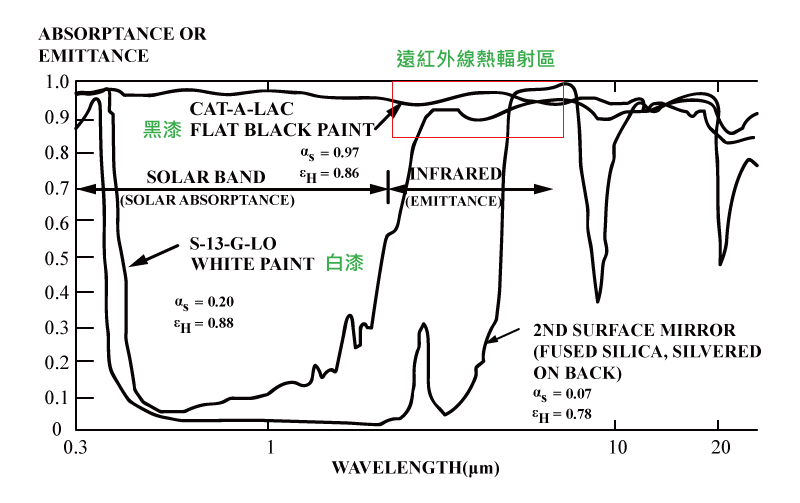Thermal radiation is energy emitted by matter that is at a finite temperature via electromagnetic waves without a material medium. In fact, radiation transfer occurs most efficiently in a vacuum, light and heat emitted by stars arrives the earth by radiation.
The characteristics of thermal radiation depend on properties of the surface it is emanating from, including its temperature, its spectral absorptivity and spectral emissivity.. Radiation heat is mainly in the infrared band of the spectrum, light colors and metallic surface absorbance to visible light (400~700µm) is low, thus the temperature rises is less compare to other surface conditions; however, the dominant emitted wavelengths are in the far infrared. emissivity at those wavelengths is not as visual emissities, most object with different colors have similar emissivity, thus the heat emitted differs not much by surface colors.

 Source : Spectral response of two paints in the visible and the infrared. From NASA.
Source : Spectral response of two paints in the visible and the infrared. From NASA.
Stefan-Boltzmann law is obtained for thermal radiation calculation. The heat transfer amount is proportional to the fourth-order of absolute temperature, thus, thermal radiation contributes more in total heat transfer while higher surface temperature.

For example, an object with surface area of 1m², surface emissivity of 0.7, at constant temperature of 75 °C, ambient temperature of 20 °C, thermal convection coefficient of 8 W/m²-K, the thermal radiant heat is then 289.6 W; and convection heat transfer is 440W, ratio of thermal radiation to total heat dissipation is 39.7%; if the surface temperature of the object increases to 150 °C, convection coefficient rises to 9W/m²-K; then thermal radiation is 978.2W, convection heat transfer is 1170W, ratio of radiation to total heat transfer becomes to 45.5% .
| Material | Emissivity ɛ |
| Aluminum, polished |
0.03 |
| Aluminum sheet |
0.1 |
| Aluminum, anodized |
0.9 |
| Copper, polished |
0.04 |
| Copper, oxidized |
0.8 |
| Brick |
0.85 |
| Paint |
0.9 |
| Concrete |
0.9 |
| Wood |
0.85 |

 繁體中文
繁體中文  English
English